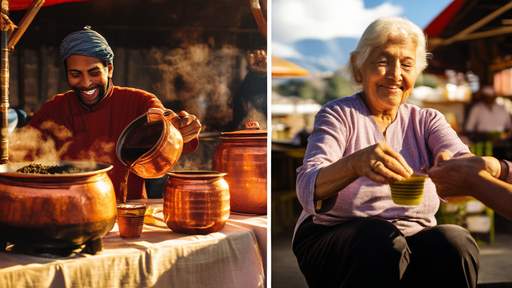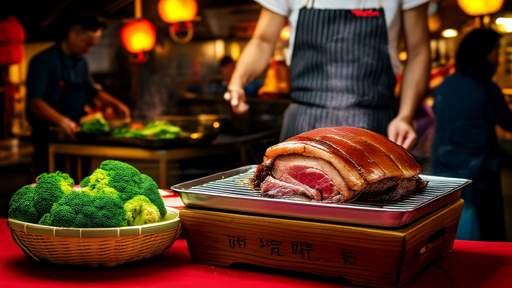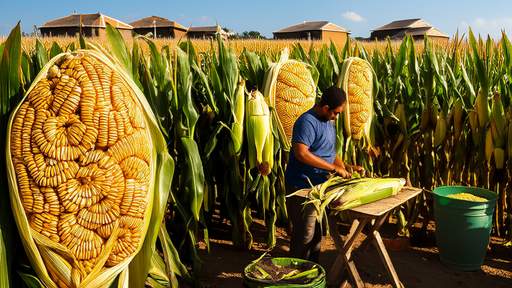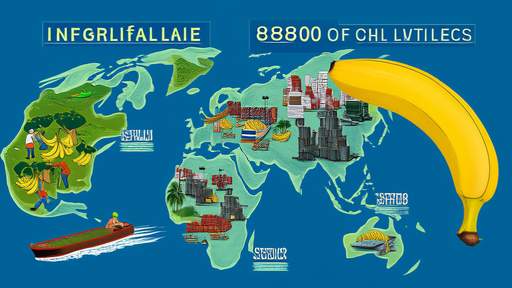The scent of buttery madeleines dipped in lime-blossom tea famously transported Marcel Proust back to his childhood in In Search of Lost Time, unlocking a flood of involuntary memory. This singular moment in literature reveals something profound about how taste and smell bypass rational thought to access deeper layers of consciousness. Writers have long understood that flavor operates as a kind of time machine—one that doesn’t just recall the past but resurrects it with visceral immediacy.
Proust’s narrator describes the experience with almost scientific precision: "No sooner had the warm liquid mixed with the crumbs touched my palate than a shudder ran through me." The passage continues with the sudden appearance of his aunt’s house in Combray, long buried but now vibrantly present. What makes this moment remarkable isn’t just its nostalgia, but its physiology. Neuroscientists now confirm that taste and smell have privileged access to the hippocampus and amygdala—regions governing emotion and episodic memory. Unlike visual or auditory cues, which are processed through multiple brain filters, scent molecules take a direct neural pathway to our earliest recollections.
This phenomenon extends far beyond Proust. Consider Laura Esquivel’s Like Water for Chocolate, where recipes become conduits for suppressed passion and generational trauma. Or the bitter almond extract in Gabriel García Márquez’s Love in the Time of Cholera, which foreshadows both suicide and enduring love. These writers intuitively grasped what science now demonstrates: flavors encode stories. The tang of preserved lemons in Diana Abu-Jaber’s Crescent doesn’t merely symbolize Middle Eastern heritage—it physically transports characters (and readers) across continents and decades.
Modern literature continues to exploit this neural loophole. In Aimee Bender’s The Particular Sadness of Lemon Cake, a child tastes her mother’s despair baked into desserts. The novel literalizes what Proust hinted at—that flavors transmit emotional truths words cannot. Even dystopian works like Margaret Atwood’s The Handmaid’s Tale use the absence of taste (bland diets as oppression) to underscore lost freedoms. When Offred recalls the sharpness of citrus or the fat of butter, these sensations become acts of resistance.
Why does this sensory alchemy work so powerfully in literature? Partly because taste is our first language. Before we comprehend sight or sound, we experience the world through the mouth—breastmilk’s sweetness, the metallic tang of blood from a bitten cheek. This primal connection makes gustatory descriptions uniquely potent. A writer mentioning "cinnamon" activates readers’ olfactory bulbs far more intensely than visual descriptors like "red" or "round."
Contemporary authors are pushing this technique further. Ocean Vuong’s On Earth We’re Briefly Gorgeous uses the brininess of oysters to bridge Vietnam’s shores with New England’s coast. Each slurp becomes a communion between immigrant generations. Similarly, in Pachinko, Min Jin Lee employs the fermentation of kimchi to trace Korean identity across decades of displacement. These works demonstrate how flavors archive cultural memory when documents are lost or histories suppressed.
The madeleine effect also operates in reverse—literature can implant false food memories. Millions who’ve never tasted Turkish delight imagine its enchantment through C.S. Lewis’s descriptions in The Lion, The Witch and The Wardrobe. Modern food brands leverage this phenomenon, creating products inspired by fictional meals (Butterbeer from Harry Potter, Panem’s bread from The Hunger Games). The boundary between actual and literary taste grows porous, proving that words can season reality.
As we navigate an increasingly digital world, the tactile power of taste in literature may become even more vital. In an era where meals are photographed more than savored, where "food content" replaces actual dining, literary descriptions serve as antidotes to dissociation. When Donna Tartt meticulously details a character peeling a persimmon in The Goldfinch, she forces readers into embodied attention—a radical act against the scroll-induced numbness of modern life.
Proust’s madeleine wasn’t merely a plot device; it was a neurological roadmap. Writers who follow this path understand that to describe a flavor is to hand readers a skeleton key—one that unlocks not just fictional worlds, but their own buried histories. The next time you read about saffron-infused paella or the acidic punch of green mango with chili salt, pay attention. Your taste buds may tingle not because of skillful writing alone, but because language has activated your edible memories. In this alchemy between page and palate, we discover literature’s most intimate magic: it doesn’t just tell stories. It lets us taste them.

By /Jun 6, 2025

By /Jun 5, 2025

By /Jun 5, 2025

By /Jun 5, 2025

By /Jun 5, 2025

By /Jun 5, 2025

By /Jun 5, 2025

By /Jun 5, 2025

By /Jun 5, 2025

By /Jun 5, 2025

By /Jun 5, 2025

By /Jun 5, 2025

By /Jun 5, 2025

By /Jun 5, 2025

By /Jun 5, 2025

By /Jun 5, 2025

By /Jun 5, 2025

By /Jun 5, 2025

By /Jun 5, 2025

By /Jun 5, 2025